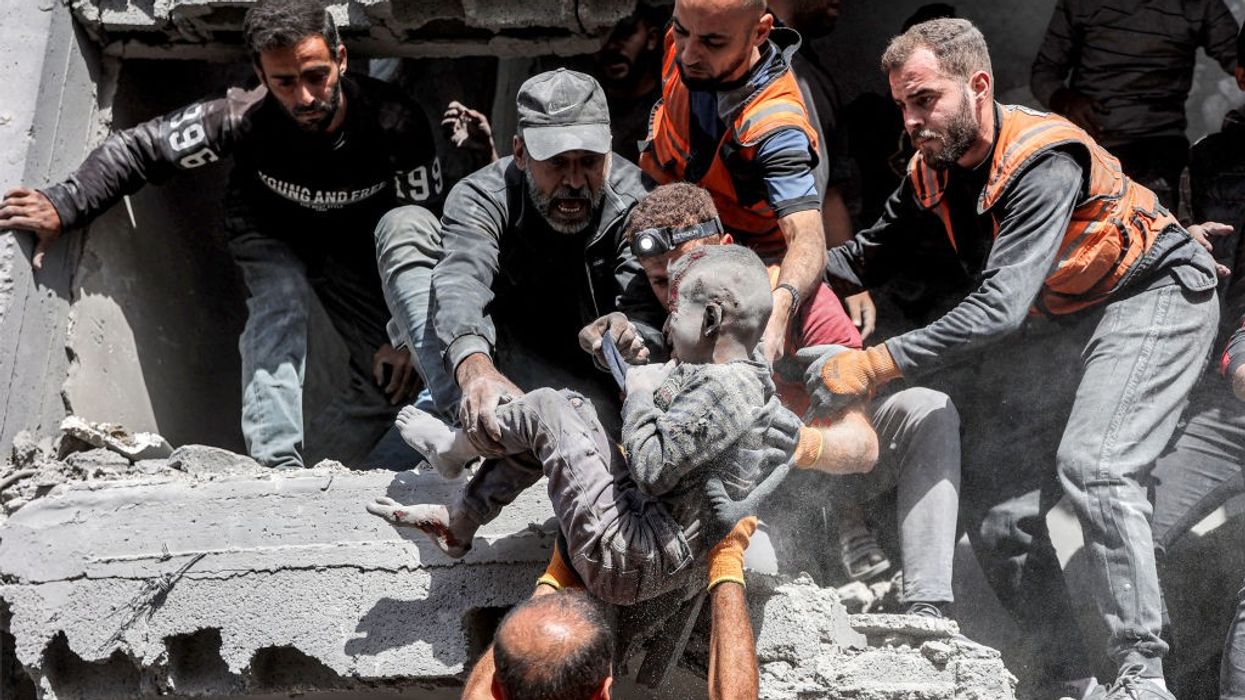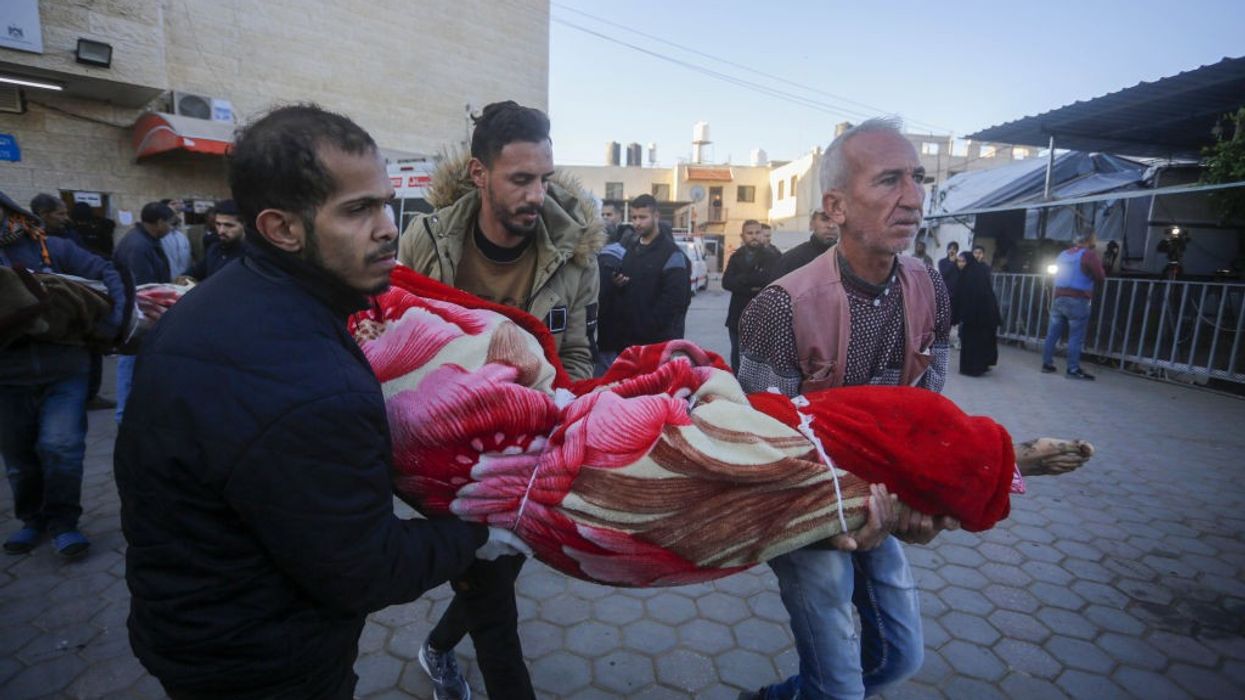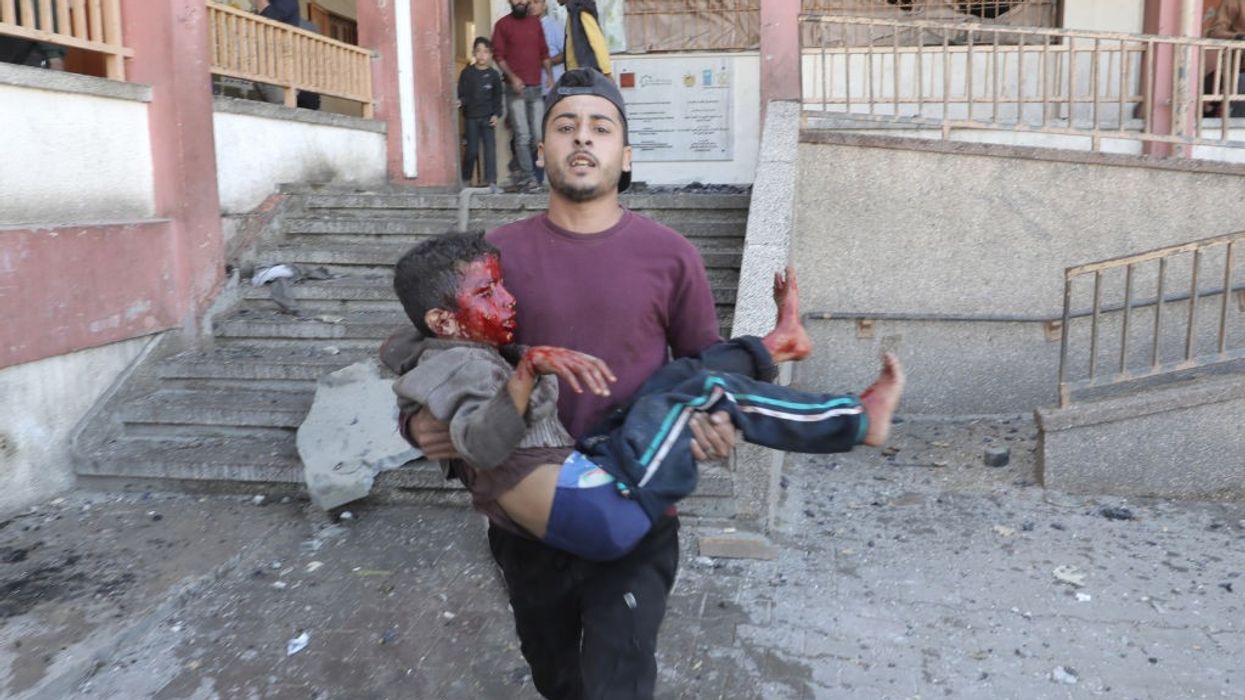A Palestinian's Year in Review: Genocide in Gaza
While Israel's desperate attempt to control the global narrative on the Gaza genocide largely failed, the ethnic cleansing continues.
The story of the Israeli war on Gaza can be epitomized in the story of the Israeli war on Beit Lahia, a small Palestinian town in the northern part of the Strip.
When Israel launched its ground operations in Gaza, Beit Lahia was already largely destroyed due to many days of relentless Israeli bombardment which killed thousands.
Still, the border Gaza town resisted, leading to a hermetic Israeli siege, which was never lifted, even when the Israeli military redeployed out of much of northern Gaza in January 2024.
Beit Lahia is largely an isolated town, a short distance away from the fence separating besieged Gaza from Israel. It is surrounded mostly by agricultural areas that make it nearly impossible to defend.
Yet, a year of grisly Israeli war and genocide in Gaza did not end the fighting there. To the contrary, 2024 has ended where it started, with intense fighting on all fronts in Gaza, with Beit Lahia, a town that was supposedly 'conquered' earlier, still leading the fight.
Beit Lahia is a microcosm of Israel's failed war in the Strip, a bloody grind that has led nowhere, despite the massive destruction, the repeated ethnic cleansing of the population, the starvation and the genocide. Every day of Israel's terrible war on the Palestinians serves as a reminder that there are no military solutions and that the Palestinian will cannot be broken, no matter the cost or the sacrifice.
Israeli Prime Minister Benjamin Netanyahu, however, remains unconvinced. He entered the new year with more promises of 'total victory', and ended it as a wanted criminal by the International Criminal Court (ICC).
The issuing of an arrest warrant for the Israeli leader was a reiteration of a similar position taken by the International Court of Justice (ICJ) at the start of 2024.
The ICJ's position, however, was hardly as strong as many had hoped or wanted to believe. The world's highest court had, on January 26, ordered Israel “to take action to prevent acts of genocide”, but stopped short of ordering Israel to halt its war.
The Israeli objectives of the war remained unclear, although Israeli politicians provided clues as to what the war on Gaza was really all about. Last January, several Israeli ministers, including 12 from Netanyahu’s Likud party, took part in a conference calling for the resettlement of Gaza and the ethnic cleansing of Palestinians. “Without settlements, there is no security,” extremist Israeli minister of finance, Bezalel Smotrich, said.
For that to happen, the Palestinian people themselves, not merely those fighting on the ground, had to be tamed, broken and defeated. Thus, the 'flour massacres', a new Israeli war tactic that was centered around killing as many Palestinians as possible while waiting for the few aid trucks that were allowed to reach northern Gaza.
On February 29, more than 100 Gazans were killed while queueing for aid. They were mowed down by Israeli soldiers, as they desperately tried to lay their hands on a loaf of bread, baby milk or a bottle of water. This scene was repeated, again and again in the north, but also in other parts of the Gaza Strip throughout the year.
The aim was to starve the Palestinians in the north so that they would be forced to flee to other parts of the Strip. Famine actualized as early as January, and many of those who tried to flee south were killed, anyway.
From the early days of the war, Israel understood that to ethnically cleanse Palestinians, they must target all aspects of life in the Strip. This includes hospitals, bakeries, markets, electric grids, water stations, and the like.
The Gaza hospitals, of course, received a large share of Israeli attacks. In March, once more, Israel attacked the Al-Shifa Medical Complex in Gaza City with greater ferocity than before. When it finally withdrew, on April 1, the Israeli army destroyed the entire compound, leaving behind mass graves with hundreds of bodies, mostly medical staff, women and children. They even executed several patients.
Aside from a few statements of concern by western leaders, little was done to bring the genocide to an end. Only when seven international aid workers with the charity, the World Central Kitchen, were killed by Israel, a global outcry followed, leading to the first and only Israeli apology in the entire war.
Desperate to distract from its failure in Gaza, but also Lebanon, and keen on presenting the Israeli public with any kind of victory, the Israeli military began escalating its war beyond Gaza. This included the strike on the Iranian Embassy in Syria on April 1. Despite repeated attempts, which included the assassination in Iran of the head of Hamas's Political Bureau, Ismail Haniyeh, on July 31, an all-out regional war has not yet come to pass.
Another escalation was taking place, this time not by Netanyahu but by millions of people around the world, demanding an end to the Israeli war. A focal point of the protests were student movements that spread across US campuses and, ultimately, worldwide. Instead of allowing free speech to flourish, however, America's largest academic institutions resorted to the police, who violently shut down many of the protests, arresting hundreds of students, many of whom were not allowed to return to their colleges.
Meanwhile, the US continued to block international efforts aimed at producing a ceasefire resolution at the United Nations Security Council. Ultimately, on May 31, US President Joe Biden delivered a speech conveying what he termed an “Israeli proposal” to end the war. After some delay, Hamas accepted the proposal, but Israel rejected it. In his rejection, Netanyahu referred to Biden's speech as “incorrect” and “incomplete”. Strangely, but also unsurprisingly, the White House blamed the Palestinians for the failed initiative.
Losing faith in the American leadership, some European countries began changing their foreign policy doctrines on Palestine, with Ireland, Norway and Spain recognizing the State of Palestine on May 28. The decisions were largely symbolic but indicated that western unity around Israel was faltering.
Israel remained unfazed and, despite international warnings, invaded the Rafah area in southern Gaza on May 7, seizing control of the Philadelphi Corridor - a buffer zone between Gaza and the Egyptian border that extends for 14 kilometers.
Netanyahu's government insisted that only war can bring their captives back. There was very little success in that strategy, however. On June 8, Israel, with logistical support from the US and other western countries managed to rescue four of its captives held in the Nuseirat refugee camp in central Gaza. To do so, Israel killed at least 276 Palestinians and wounded 800 more.
In August, another heart-wrenching massacre took place, this time in the Al-Tabaeen school in Gaza City, where 93 people, mostly women and children, were murdered in a single Israeli strike. According to the United Nations High Commissioner for Human Rights, women and children were the main victims of the Israeli genocide, accounting for 70 percent by November 8.
An earlier report by the Lancet Medical Journal said that if the war stopped in July, “186,000 or even more” Palestinians would have been killed. The war, however, went on. The rate of genocide in Gaza seemed to maintain the same killing ratio, despite the major regional developments including the mutual Iranian-Israeli tit-for-tat strikes and the major Israeli ground operation in Lebanon.
In October, Israel returned to the policies of targeting or besieging hospitals, killing doctors and other medical staff, and targeting aid and civil defense workers. Still, Israel would not achieve any of its strategic goals of the war. Even the killing of Hamas’ leader, Yahya Sinwar, in battle on October 16 would not, in any way, alter the course of the war.
Israel's frustration grew by leaps and bounds throughout the year. Its desperate attempt to control the global narrative on the Gaza genocide largely failed. On July 19, and after listening to the testimonies of over 50 countries, the ICJ issued a landmark ruling that “Israel's continued presence in the Occupied Palestinian Territory is illegal.”
That ruling, which expressed international consensus on the matter, was translated on September 17 to a UN General Assembly resolution “demanding an end to Israel’s occupation of Palestine within the next twelve months”.
All of this effectively meant that Israel's attempt at normalizing its occupation of Palestine, and its quest to illegally annex the West Bank was considered null and void by the international community. Israel, however, doubled down, taking its rage against West Bank Palestinians, who, too, were experiencing one of the worst Israeli pogroms in many years.
According to the Palestinian Health Ministry, by November 21, at least 777 Palestinians have been killed since October 7, 2023, while thousands more were wounded and over 11,700 arrested.
To make matters worse, Smotrich called, on November 11, for the full annexation of the West Bank. The call was made soon after the election of Donald Trump as the next US President, an event that initially inspired optimism amongst Israeli leaders, but later concerns that Trump may not serve the role of the savior for Israel after all.
On November 21, the ICC issued its historic ruling to arrest Netanyahu and his Defense Minister Yoav Gallant. The decision represented a measure of hope, however faint, that the world is finally ready to hold Israel accountable for its many crimes.
2025 could, indeed, represent that watershed moment. This remains to be seen. However, as far as Palestinians are concerned, even with the failure of the international community to stop the genocide and reign in Israel, their steadfastness, sumoud, will remain strong until freedom is finally attained.


